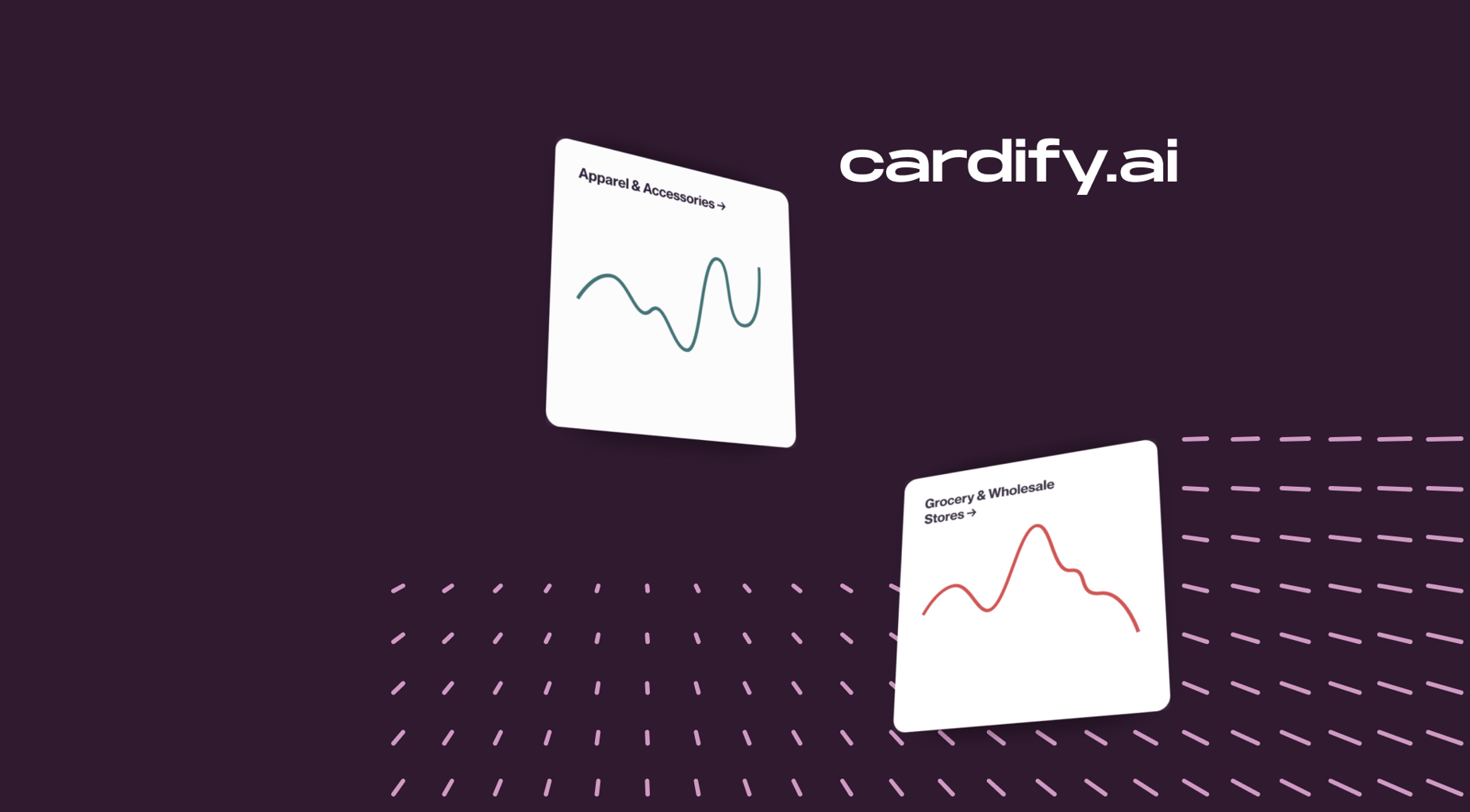Why are Goldman Sachs & WSJ using Cardify.ai data from Drop?

Over the past few months, the Wall Street Journal and Goldman Sachs have begun to use Drop’s Cardify.ai data highlighting insights into consumer spend and income during the COVID-19 pandemic. Even cloud juggernaut Snowflake is using Cardify.ai as a featured dataset during demos with their customers.

Why is that?
Cardify.ai’s market validated database has access to both credit cards and debit cards for a growing millennial audience. This access gives them a holistic view of consumer spending and income, especially relevant during the COVID-19 pandemic. Cardify.ai maintains a first-party, consumer permissioned data set, where consumers opt-in to sharing their data in return for exclusive deals.While harvesting insights from transaction data is not a new concept, Cardify.ai’s first-party relationship allows them to survey consumers based on their known spend to better understand consumer spending psychology. This allows Cardify.ai to marry quantitative data with qualitative insights to answer the why behind changes in consumer spending.
What is Cardify.ai from Drop?
Cardify.ai is a new market research platform that unlocks consumer spending data. Their insights are based on transaction data from Drop, a mobile-first rewards platform that lets users earn points for spending their time and money. Drop has over 3.5M users and 6M linked financial accounts with 500+ merchant partners like Walmart, Apple, Lyft, and American Express doing over $3B in monthly transactions.
Examples of Insights from Cardify.ai
The $600 per week boom (and bust)In mid-April, the United States federal government signed into effect a package that offered unemployment insurance (UI) benefits of $600 per week to those who lost their jobs in light of the ongoing pandemic. Comparing the spending and consumption patterns of Americans who received the weekly benefit against those who did not, Cardify.ai found that the $600 per week supplement had a positive effect on spending habits and that the expiration of the benefits resulted in an inflection point in how much (and where) Americans are spending their paychecks.
View the full report on the $600 per week unemployment insurance benefit here.
Is Peloton a pandemic fad or a sustainable fitness platform?Peloton has been a notable winner during the pandemic with purchases for the at-home spin bike surging over the last few months. Through Cardify.ai’s survey capabilities, they were able to reach out to Peloton purchasers to get qualitative insights on whether Peloton represents a pandemic fad or sustainable fitness trend. They found that Peloton is likely not just a pandemic fad with people reporting high satisfaction with their purchase and the majority of purchasers noting an increase in motivation, frequency, and intensity related to working out.
View the full report on Peloton’s pandemic purchasers here.
In pandemic investing, Robinhood is the real winnerCardify.ai monitors net investments their users make, which represent the net of new deposits and withdrawals in electronic trading platforms. Despite economic troubles brought on by the pandemic, they found that their users seem to be investing more in 2020 as compared to 2019.They also found that during the pandemic, Robinhood was the clear winner amongst investment platforms, surging from one percent market share to 43% based on the number of users. It also has the youngest user base, with 81% of its users under the age of 35.
View the full report about consumer investing habits here.
What’s Next?
Cardify.ai continues to update their weekly spend indexes and highlight key trends in consumer spending and the financial health of consumers through their email newsletters. To better inform decision making for your business, you can subscribe to their free content here, or submit a question to understand how their data can help you.To learn more about Drop, visit https://www.joindrop.com/.
Looking for more insights? Check out our post on 5 Tech Themes for the Distributed World.
